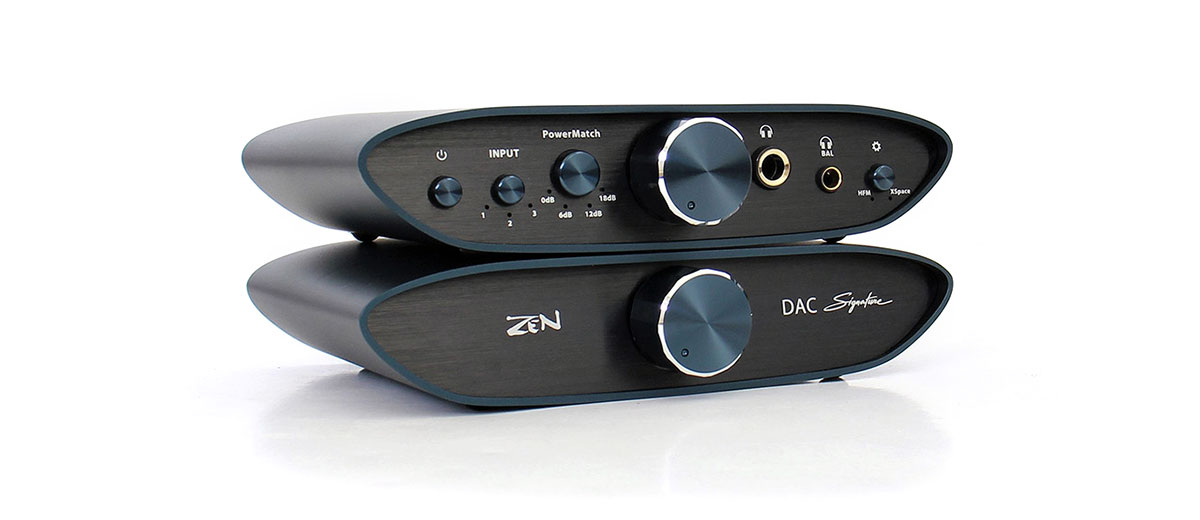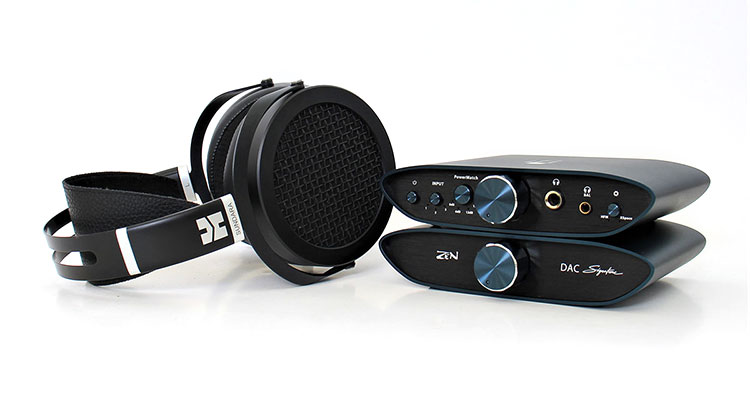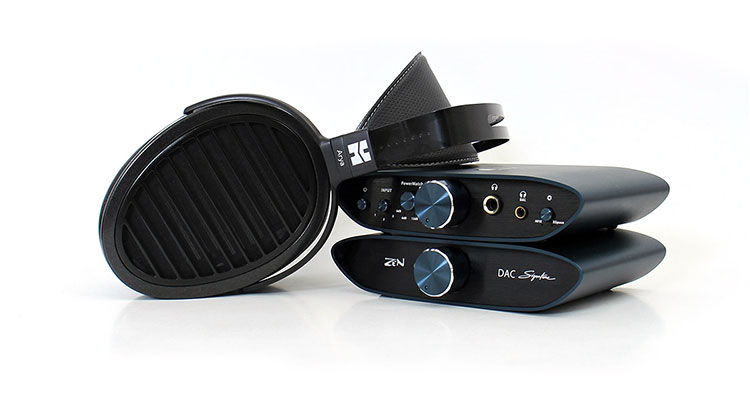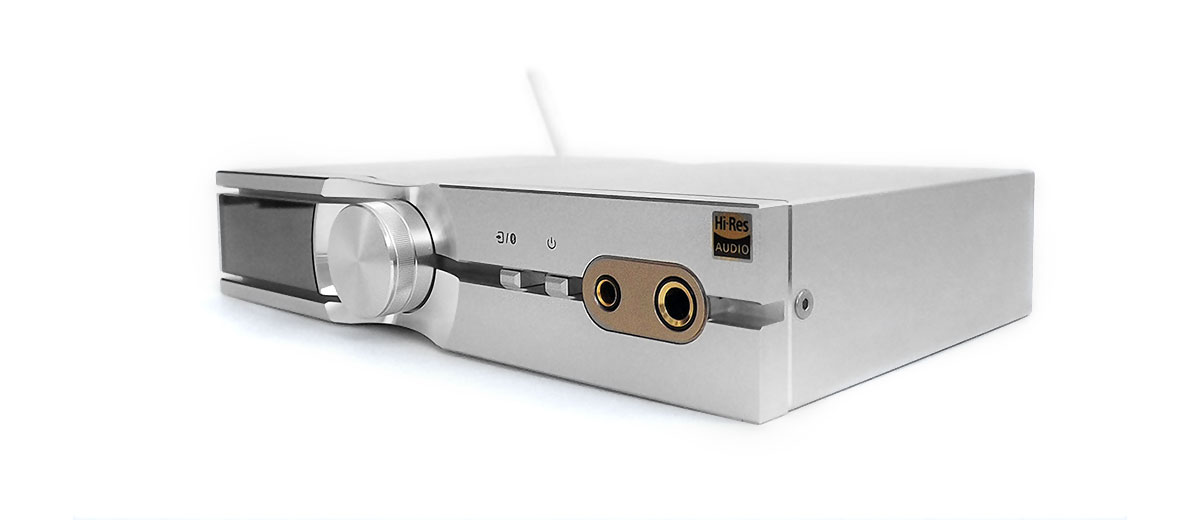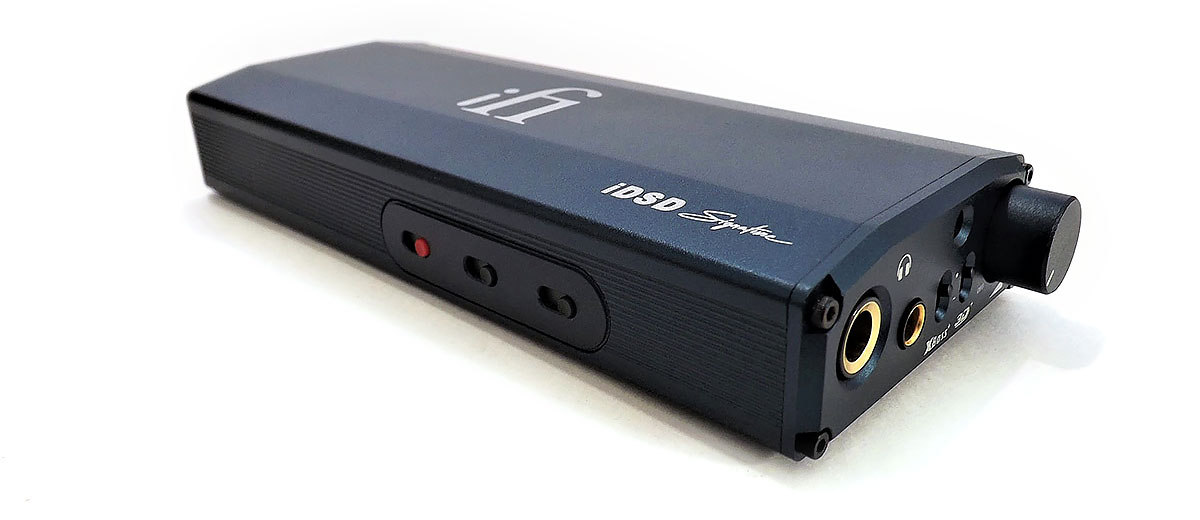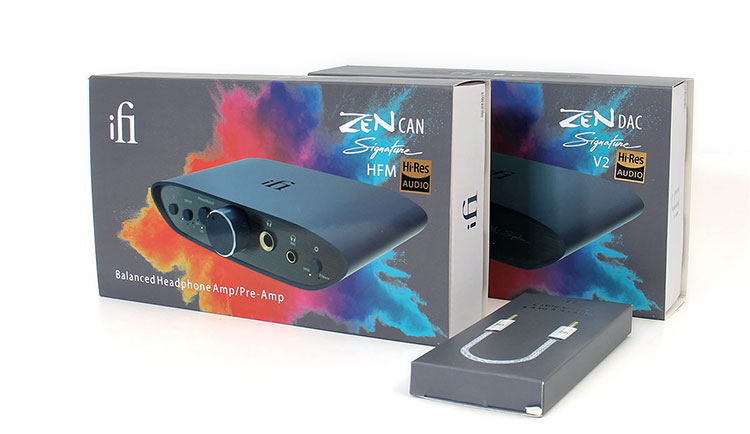Sound Impressions
Summary
This is the same dish with different sauce as stated but there seems to be a steer to better-extended extremes while also trying to maintain that iFi Audio warm sound signature and dark background simultaneously.
The familiar iFi warm sound signature, high dynamic range and low distortion characteristic with a rather neutral frequency response peculiars are still there when the tone switch is not engaged. The frequency response remains rather flat and well-balanced.
Hiss is kept down especially on the 0 gain setting of the Power Match and since the noise floor was also lowered especially on the DAC section lots of detail comes through.
I also heard less veil compared to the first iterations of the same amp the ZEN CAN and DAC 8 core original variants. The source of this might be the improvements within the DAC section but regardless details were more distinct and micro details more present.
HFM Feature
I do prefer the HFM tone curve button in general over the 6xx variant because the 6xx has a large hump that starts at the bottom end and goes all the way up to 500Hz which is more specifically tuned for the 6xx while the bass boost on the HFM is more subtle and similar to the original Xbass feature making it more universally useful.
The HFM switch elevates the bass a subtle 6dB below 80Hz and is very similar to Xbass and tends to work well with other headphones. I like the switch with bass light IEMs also when you want that extra kick in the bottom but not the kind that hurts of course.
The feature seems to add more body to vocals and parts of the midrange as well and there’s an area where the switch does not elevate the frequency response but seems to push vocals a few inches inward allowing a more intimate character to come through.
Although the iFi Audio frequency graph shows a minimum amount of effect on the treble I find it to change rather significantly and the high frequencies sound more defined, more weight and there seems to better control overall over stock setting.
XSpace Feature
The original ZEN CAN has a 3D feature and the HFM plus the 6xx variants have a similar feature but this time around it’s called XSpace and I find them both to have particularly unique characteristics.
I have both units and I sense an enlargement of elements within a recording with the 3D feature while the XSpace enlarges the space around the element inside a recording and there is also an enhanced depth perception.
Synergy
I am going to veer from the norm here and speak more of the effects the HFM feature has with particular Hifiman headphones starting with probably the most economical model up to one that costs 3 times what the HFM set is valued at.
The idea came to me from a photo taken at 2021 Can Jam SOCAL which unfortunately I could not attend but I did get to see lots of pictures of the event. Within those pictures, I saw a picture of the Hifiman booth and on their table was the iFi Audio Signature HFM set along with the HE400Se, the Sundara, and the Arya so those are the three we will use.
My daily desktop setup consists of an iFi Audio NEO feeding a Topping A90 through the XLR connections so the comparison will be in general against this pairing. Also to be fair, only the single-ended side was used on the A90 due to the power disadvantage of the balanced that specs out at 7800mW per side.
Hifiman HE400se
The HE400se offers a very good overall balance for the price because I personally cannot fault any of its sonic characteristics. It does everything well but not to perfection. For example, staging is a bit narrow and trails behind placement.
The 3D switch opens them up a few inches each side in width and frontward and remedies the narrowness with no perceived negative decrease in sound quality. The HFM set brings out the best in these cans by adding some separation between the different elements in a recording.
The one area in the frequency response that I noticed the most prominent effect is in the bass response and the HFM feature adds some bottom-end kick which to me is welcomed but not absolutely necessary with these headphones in particular.
Hifiman Sundara
They say the ideal combo is a balanced cost ratio. For example, if you have $500 headphones then your amplifier DAC rig should cost around the same amount to ensure a good balance.
Well, both these pieces of gear are similar in retail value. Remember, the Sundara was introduced at $500 which is very close to the HFM set retail but Hifiman decided to lower the price and spread some love.
The Sundara is one of the most popular and best-valued headphones out there and this pairing is just about perfect because to get better performance you would probably have to spend megabucks and go the exotic boutique gear route to feed the Sundaras.
This set not only brings lots of clarity and detail to the mix but the HFM feature fattens up the bottom bass on the Sundara which so many in forums and reviewers say that this set lacks. In fact, I think the lower bass presence of the Sundaras seems to be the only complaint they get, and this feature remedies that small deficit. I honestly think they have very good bass stock.
The midrange seems to also benefit from some added girth and forwardness plus the treble is brilliantly done over with the removal of some edginess around 5 kHz and I can honestly say this HFM set manages to control the highs on the Sundara very well while at the same time adding some presence.
Hifiman Arya
I have the second release which has the cloth grill instead of the metal grill. Some argue that this version is the best one but I can’t say personally since I have not yet heard the recently released stealth edition.
From the three headphones mentioned the Aryas are the least efficient and the most power-hungry of the group and I feel that although the HFM set has enough power to run the Aryas they simply benefit from gear that can muster up more raw power.
I must admit, I do like high volume levels. This combo is a good listen at moderate volume levels long as you do not desire very high volume however because the bass response, in particular, will suffer.
Most of the qualities of the Aryas are kept including the large panoramic presentation with excellent placement but most times I wished for a harder bottom-end kick. The Aryas have some but you have to feed them lots of power and the 1890mW per side is just not enough in my personal opinion.
Select Comparisons
iFi Audio NEO
$799
Technical
This time I am not going to compare the ZEN CAN and ZEN DAC original combo to this set but instead will compare it to the NEO which if we go by the price it sits in a slightly higher tier. However, if you were to remove the digital display, a couple of the digital inputs, the remote control, and the Bluetooth receiver then the playing field evens out somewhat.
The NEO uses a similar 16 core XMOS DAC design but iFi Audio designed the NEO to be a purist model with no tone controls or sound-altering features. The focus of the NEO design concept was put into creating an all-in-one desktop solution with no noise, hiss or clicks, popping noises. Here, cleanliness was prioritized.
Design
Even though both these models are desktop models one could never mistake the two designs. I really like the fact that the NEO can be placed horizontally or vertically with an included base constructed of solid aluminum. It’s a great-looking unit.
A lot of attention was placed on making sure all the components kept the circuitry clean and free from artifacts, hiss, clicks, and pops. Even the LCD was chosen for its low noise operation.
The NEO is in many ways an “all in one” design with more than one digital input and analog output. Input and output connectivity is better plus you could use the Bluetooth receiver to transmit to the NEO up to LDAC codec level.
Another benefit of the NEO is the included remote control although, for the caliber of gear that this device is, I would say it deserves a better remote control.
Performance
The NEO aims sonically for a flat, neutral, and clean sound signature with a minimum amount of alteration, veil, or noise of any kind. There are no tone-altering features on this unit whatsoever.
I did say that I felt that there was a lack of power but the Neo makes up for it by having an excellent DAC section that with the right amplifier can make a formidable setup. I use mine personally with the Topping A90 and use XLR connectors and I am very happy with this combo until I can get a Signature pro.
The NEO has up to 1000mW per channel which is enough power for most headphones and all IEMs that I own. Some find the sound signature to be somewhat narrow but to me, this DAC section can do staging presentations extremely well.
iFi Audio Micro iDSD Signature Series
$749
Technical
Here is another unit that I highly recommend for many reasons. The internal battery not only supplies portable power but also supplies clean power and bypasses circuitry that converts AC to DC.
But just because the design uses a clean power the design is still a total contrast from the other two models. The HFM is a combo that aims to correct some small flaws, the NEO is a clean freak and the Micro iDSD signature is geared for versatility and packed with lots of fun features.
Design
If size matters the Micro iDSD is the smallest in this comparison but do not let the micro name fool you. I would consider the new GO BLU micro but this model is borderline portable size acceptable and is definitely not too pocket friendly.
In actuality iFi Audio markets the Micro iDSD Signature as a desktop unit with portable capability. The battery is there mainly to act as a DC power filter.
The unit is basically the same size as my 6-inch android phone in height and width but the girth is beefier and almost 4 fold but on a positive note the real estate has a good amount of switches and features to play around with.
Performance
The funny part of this comparison is that the smallest unit of the three is actually the most powerful in raw power output and by a lot. It also has more sound-altering features than the other two. This is a small form factor fun machine for sure.
The Xbass, 3D feature, selectable DAC function with Power Match plus a balanced output capable of 4100mW of power is preferred most times over the other two units simply because there is just more connotative fun.
You miss out on the 16-core XMOS dual Burr Browns and perhaps this fact gives reason to the Micro iDSD added color and veil in its sound signature. The HFM set also does hardware rendering while the Micro iDSD Signature does a software-hardware load split.
So in general if you want power and features this is the way to go. If you want a good control center with an uncolored sound signature then get the NEO. The HFM series is ideal for those who want something in between at a lower cost but want to enjoy more detail and background nuances directly out of the box.
Our Verdict
Some audiophiles love the hunt and adventure of having to find the right components for their headphones and might find the iFi Audio Signature Series HFM set to be a plain vanilla setup. It’s not. Most do not have the time or finances and prefer simple solutions. This is where the HFM set comes in with great out-of-the-box synergy.
The 16 core XMOS DAC is a great sounding unit and so is the original ZEN CAN but the HFM amplifier improves on an already great amplifier by the addition of color and some small improvements in construction and visual character.
Again I need to remind the readers that you are not obligated to use Hifiman headphones to get great performance from this box set. When the HFM feature is off, you still get that familiar warm-sounding iFi Audio sound but when you use the HFM feature with other headphones the feature acts similar to Xbass which is still, in my opinion, the best bass boost around.
The robust all-metal construction, visual appeal, a dark background with a high amount of dynamic range with an uncanny ability to extract subtle nuances from recordings along with the improvements over what was already good all together gives me more than one reason to recommend the HFM box set.
iFi Audio Zen Signature Set HFM Specifications
Zen DAC Signature V2
- Input:USB-B 3.0 socket (USB-B 2.0 compatible)
- Supported formats: PCM 44.1 / 48 / 88.2 / 96 / 176.4 / 192 / 384 kHz
- 8/3.1/5.6/6.2/11.2/12.4MHz DSD
- 8 / 384KHz DXD
- MQA
- DAC: bit-perfect DSD and DXD by Burr-Brown
- Power consumption: 5V / 174ma, P = 0.887W (on idle using included iPower)
- Audio RCA output (unbalanced) 1 V fixed, 1 V – 3.3 V maximum (variable)
- 4 mm Pentaconn output (balanced): 4.2 V fixed, 2 V – 6.2 V maximum (variable)
- Z output (unbalanced): ≤ 100 ohms
- Z output (balanced): ≤ 200 ohms
- SNR: < -117 dB(A) at 0 dBFS (unbalanced / balanced)
- DNR: > 117 dB(A) at -60 dBFS (unbalanced / balanced)
- THD+N: <0.0011% at 0 dBFS (unbalanced / balanced)
- Dimensions: 6 x 3.9 x 1.2 in (11.7 x 10 x 3 cm)
- Weight: 05 lbs (505g)
Zen Can HFM
- Inputs: RCA, 3.5 (single-ended), 4.4mm (balanced)
- Headphone output: 35 mm, 4.4 mm
- Gain: 0dB, 6 dB,12 dB,18 dB adjust
- THD+N (A-Weighting): 0066% (balanced), 0.0058% (single-ended)
- Maximum output power (16 ohms): 0 V / 600 mW (balanced), 4.0 V / 1000 mW single-ended)
- Maximum output power (300 ohms): 1 V / 756 mW (balanced), 7.6 V / 196 mW (single-ended)
- Maximum output power (600 ohms): 2 V / 385 mW (balanced), 7.6 V / 98 mW (single-ended)
- SNR: -122 dB (balanced)
- Dynamic range: -122 dB (balanced)
- Frequency response (-3dB): 10 Hz – 200 kHz
- Function Button: HFM adaption and/or XSpace; Bypass
- IMD: 0098%
- Crosstalk: -50 dB
- Zout (headphone out): 25 ohms (single-ended), 0.5 ohms (balanced)
- Zout (balanced line out): 200 ohms
- Maximum power consumption: 13 W / 2.6A
- Dimensions: 6 x 3.9 x 1.2 in (11.7 x 10 x 3 cm)
- Weight: 87 Ibs (848g)

